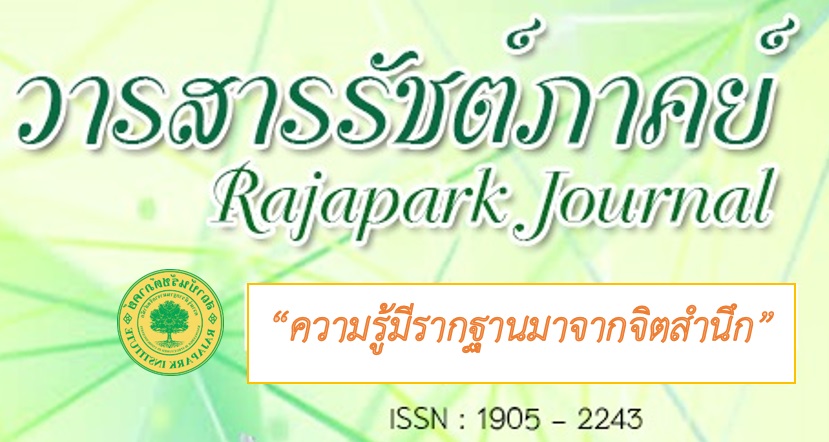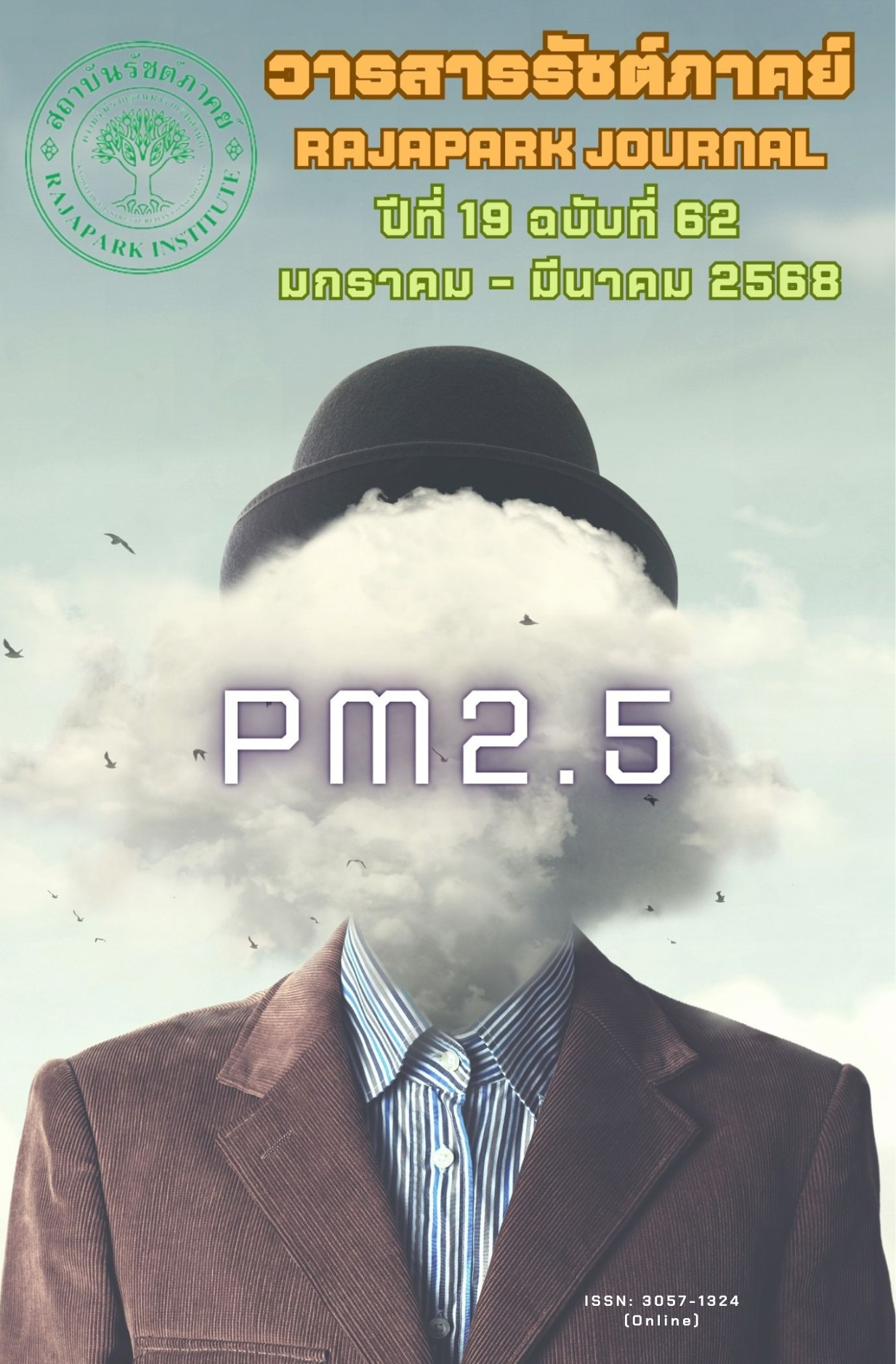แนวทางการพัฒนาเกี่ยวกับการบังคับใช้วิธีการเพื่อความปลอดภัย ตามประมวลกฎหมายอาญาของไทย
Main Article Content
บทคัดย่อ
การวิจัยนี้มีวัตถุประสงค์เพื่อศึกษาและวิเคราะห์สภาพปัญหาในการบังคับใช้วิธีการเพื่อความปลอดภัย และให้ได้แนวทางการพัฒนาการบังคับใช้วิธีการเพื่อความปลอดภัยตามประมวลกฎหมายอาญาของไทย โดยใช้วิธีวิจัยแบบผสมผสาน ด้วยการวิจัยเชิงคุณภาพ วิจัยเอกสารและสัมภาษณ์แบบเจาะลึกผู้ให้ข้อมูลสำคัญ 30 คน และการวิจัยเชิงปริมาณ ใช้แบบสอบถาม 402 ชุด วิเคราะห์เนื้อหาและสถิติเชิงพรรณนา ผลการศึกษาพบว่า แนวทางการพัฒนาการบังคับใช้วิธีการเพื่อความปลอดภัย 28 ข้อ มีค่าเฉลี่ย 4.34 ส่วนเบี่ยงเบนมาตรฐาน 0.48 ผู้ตอบแบบสอบถามส่วนใหญ่เห็นด้วยระดับมากที่สุด ในด้านนโยบายของรัฐ ( = 4.49, S.D. = 0.52) รองลงมา คือ ด้านองค์ความรู้ ความเข้าใจของบุคลากร (
= 4.30, S.D. = 0.60) ด้านกฎหมาย (
= 4.27, S.D. = 0.59) และด้านองค์กร (หน่วยงาน) (
= 4.27, S.D. = 0.73) ตามลำดับ นำมากำหนดเป็นแนวทางการพัฒนาการบังคับใช้วิธีการเพื่อความปลอดภัย 4 ด้าน คือ 1) ด้านกฎหมาย ควรแก้ไขปรับปรุงกฎหมายให้สอดคล้องสภาพสังคม กำหนดฐานความผิดให้ครอบคลุมกฎหมายอื่น กำหนดบทบาทอำนาจพนักงานสอบสวนให้ชัดเจนตามหลักการดำเนินคดีอาญาโดยรัฐ 2) ด้านนโยบายของรัฐ ในการบังคับใช้ การติดตามตัวบุคคล ข้อมูลอาชญากร งบประมาณ ความร่วมมือระหว่างหน่วยงาน เทคโนโลยี และการควบคุมตัวในสถานพยาบาล 3) ด้านองค์ความรู้ ความเข้าใจ ควรส่งเสริม สร้างองค์ความรู้ให้กับบุคลากรทุกระดับ และ 4) ด้านองค์กร (หน่วยงาน) ควรมีหน่วยงานกลางทำหน้าที่ประสานความร่วมมือโดยให้กรมคุมประพฤติเป็นหน่วยงานหลัก
Article Details

อนุญาตภายใต้เงื่อนไข Creative Commons Attribution-NonCommercial-NoDerivatives 4.0 International License.
ทัศนะและความคิดเห็นที่ปรากฏในวารสาร ถือเป็นความรับผิดชอบของผู้เขียนบทความนั้น และไม่ถือเป็นทัศนะและความรับผิดชอบของกองบรรณาธิการ
เอกสารอ้างอิง
Bentham, J. (1970). An introduction to the principles of morals and legislation. Eds. J. H. Bums and H. L. A. Hart. The Athlone Press.
Boontham, P. (2016). Measures to secure the enforcement of the sentence imposed instead of imprisonment. Veridian E-Journal, Silpakorn University (Humanities, Social Sciences and Arts), 9(1), 237-249. https://he02.tci-thaijo.org/index.php/Veridian-E-Journal/article/view/52757
Bunyophas, W. et al. (2003). Strengthening measures for the effectiveness of the law enforcement process of the NACC. National Anti-Corruption Commission (NACC), Thailand.
Chaiyachomphu, C. (2017). “Methods for safety”: Neglected preventive criminal enforcement measures. This individual academic document is part of the training course “Chief Judge” 16th batch, College of Judicial Officials, Judicial Training Institute, Thailand.
Chiewchan, C. (2010). Safety methods for mentally ill people who will cause harm to society. Graduate School, Dhurakij Pundit University.
Chubamrung, A. (1989). Criminology and crime. Department of Political Science and Public Administration, Faculty of Social Sciences, Kasetsart University.
Jaihan, N. (2000). Criminal law regarding punishment and safety procedures. Winyuchon.
Mill, J.S. (1957). Utilitarianism. Bobbs-Merrill.
Na Nakhon, K. et al. (2010). Progress report form of the research project study to develop a system for using safety methods. (n.p.).
Phothi, P. (2019). The use of electronic tracking devices in conjunction with quarantine and prohibition of entry into designated areas as a method for safety. Faculty of Law, Sripathum University.
Rungprathavirat, A. (1984). The enforcement of criminal law by the justice process in Thailand[Master’s thesis, Chulalongkorn University].
Sermsintham, P. (2021). Criteria for determining criminal penalties under the project to support information for the work of members of parliament. King Prajadhipok’s Institute.
Thaniyaphon, P., & Nimnoi, S. (1996). Criminology and penology. Thammasat University.
Thongsak, S. (2019). Legal problems in enforcing safety measures in criminal cases: A study of the detention of habitual offenders. Graduate School, Faculty of Law, Ramkhamhaeng University.
Wattanawanich, P. (1981). Criminal justice system: concepts of crime control and the legal process. Journal of Law, 9(2), 142-171.
Wisesrat, C. (2008). The application of safety measures in criminal cases: gathering facts in the conduct of a case[Master’s thesis, Dhurakij Pundit University].
Woraphat, T. (2010). Law on imprisonment. Winyuchon.
World Prison Brief. (2020). Highest to lowest-prison population total. https://www.prisonstudies.org/ highest-to-lowest/prison-population-total?field_region_taxonomy_tid=All
Yamane, T. (1973). Statistics: An introductory analysis (3rd ed.). Harper and Row.


